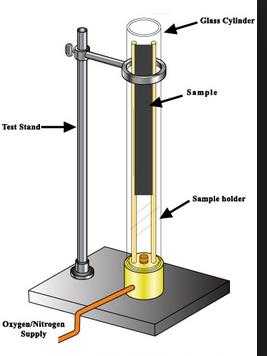
NewsInformation Center
What is the ASTM limiting oxygen index?
2023/08/18
The ASTM Limiting Oxygen Index (LOI) is a test method used to evaluate the burning performance of materials. The index is measured according to the ASTM D2863 standard developed by the American Society for Testing and Materials (ASTM).

The limiting oxygen index is the lowest percentage of oxygen concentration in a gas mixture that will support a material that burns in the vertical direction to maintain a state of spontaneous combustion. In other words, it indicates a material's ability to inhibit the self-propagation of flame.

The principle of the LOI test is to expose the material to be tested to a specific mixture of atmospheres and observe whether the material is able to maintain a state of spontaneous combustion by gradually decreasing the oxygen concentration. When the oxygen concentration reaches a certain critical value, the material will not be able to sustain combustion, and this critical value is called the Limiting Oxygen Index (LOI).
A higher value of LOI indicates that the material is more resistant to combustion and has a lower oxygen demand, further preventing the spread of flame. Generally speaking, materials with an LOI of 21% or higher are usually considered good flame retardant materials.
As for your reference to "1200", I'm not sure exactly what that refers to, since ASTM LOI test results are expressed as a percentage. Please provide more contextual information and I will try to help you.
Previous: How does a fatigue tester work?
N e x t : China Ozone Aging Test Chamber Manufacturer and Supplier recommend



